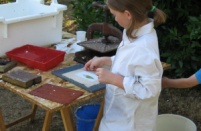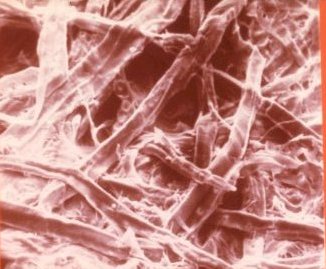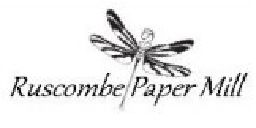 The mill's manufacturing methods are essentially traditional. Hand moulds are used to form the sheets. Some moulds date from the 1880's. Most, however, have been made from mahogany hard woods and bronze wire more recently by Amies and Son of Maidstone, Kent, England.
The mill's manufacturing methods are essentially traditional. Hand moulds are used to form the sheets. Some moulds date from the 1880's. Most, however, have been made from mahogany hard woods and bronze wire more recently by Amies and Son of Maidstone, Kent, England.


